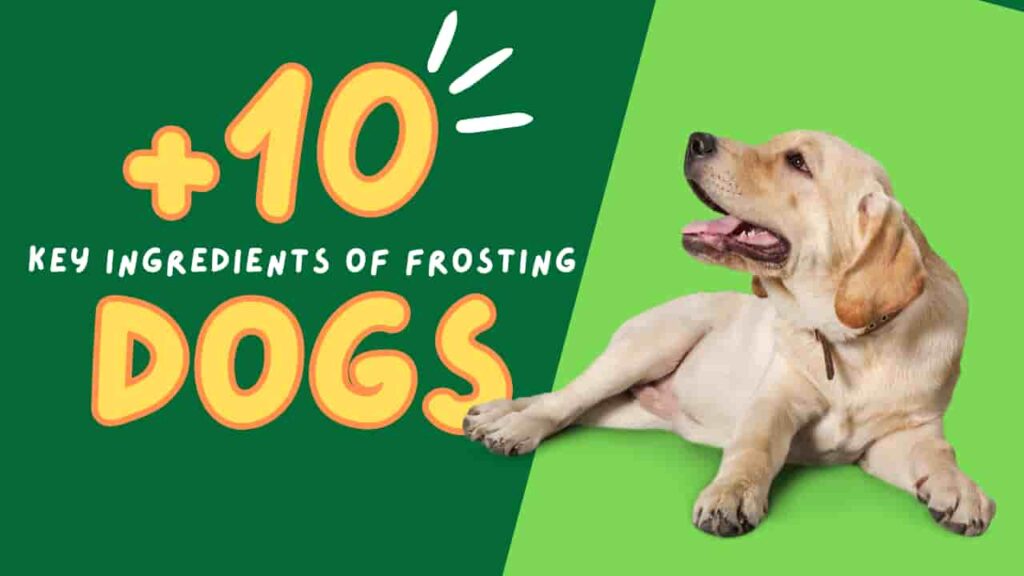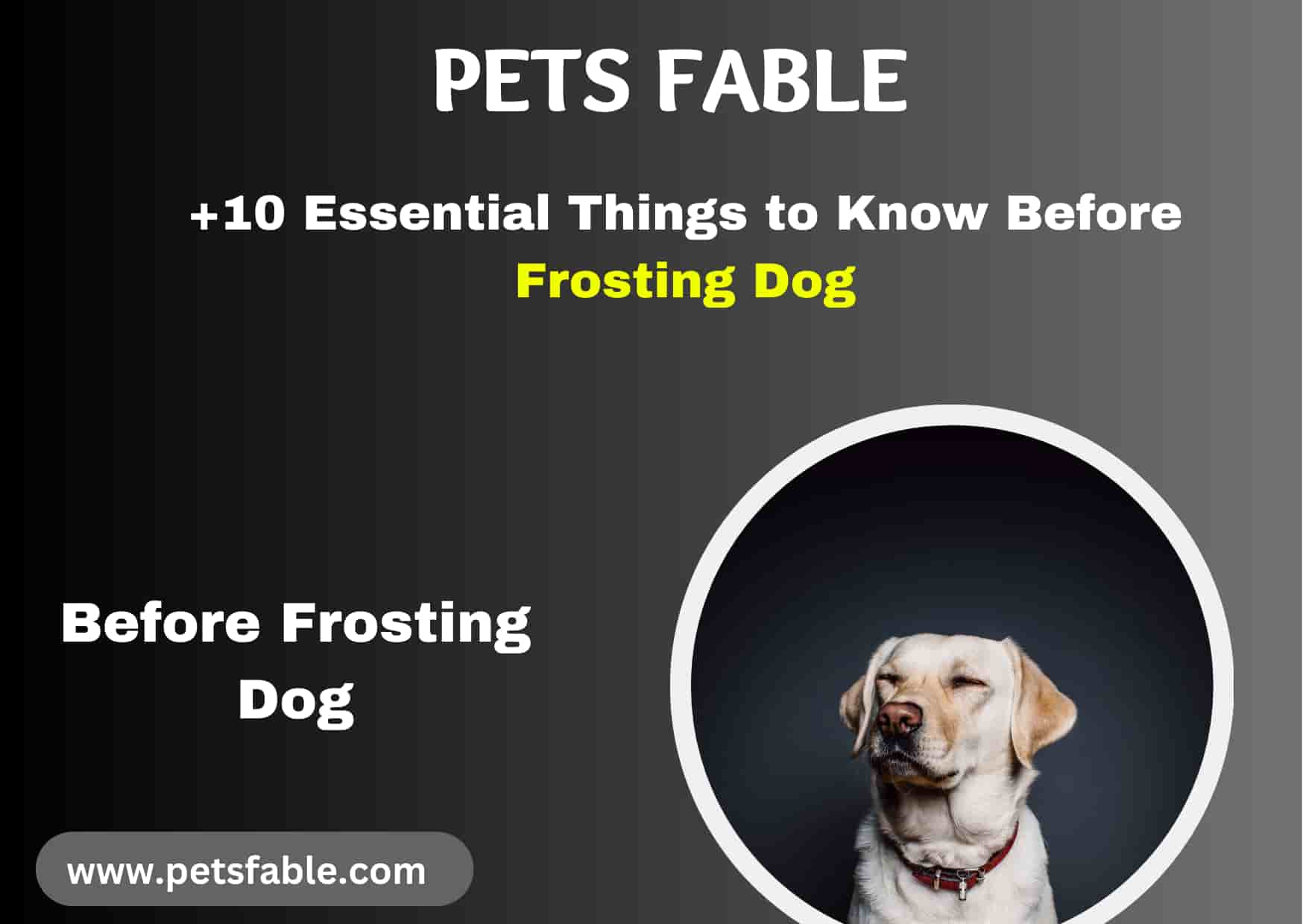Essential Insights on Feeding Frosting Dogs
While it’s technically possible for Frosting Dog to ingest in tiny quantities, it’s generally ill-advised due to the potential health risks.
Frosting Dog often includes high levels of sugar and occasionally harmful ingredients such as xylitol or chocolate, which are toxic to dogs. These components can cause obesity, dental problems, and other significant health issues.
For your Frosting Dog health and safety, it’s best to steer clear of human desserts like frosting and choose treats made specifically for pets.
Can Dogs Eat Frosting?
No, it is not safe to give frosting to dogs. Traditional frosting is made with ingredients such as sugar, fats, milk, and raw egg whites, which can be harmful to dogs, potentially causing digestive troubles and other health complications.
To ensure the well-being of your pet, consider dog-friendly treats that are specifically formulated to meet their dietary needs. These alternatives provide a safe and enjoyable treat, keeping your pet both happy and healthy.
How is Frosting Prepared?
Frosting is a staple in baking that enhances the appeal of cakes, cupcakes, and other pastries, especially during celebratory events like birthdays.
Key Ingredients of Frosting
- Butter and Sugar: These foundational ingredients are whipped into a creamy, airy texture.
- Artificial Colorings: These add visual appeal.
- Cocoa Powder: Delivers a deep chocolate flavor.
- Vanilla Extract: Adds a classic sweet note.

Diverse Applications of Frosting
- Customization: Available in a variety of flavors and colors.
- Usage: Applied between cake layers or as decorative topping.
Frosting showcases culinary creativity, blending taste and aesthetics through meticulous ingredient selection and whipping techniques, serving as the decorative highlight of desserts.
Read more: Diverse Applications of Frosting dog
Why Should Dogs Avoid Frosting?
While the occasional lick of frosting might seem harmless, regular consumption can lead to significant health issues due to:
- High Sugar Content: Inappropriate for a dog’s diet and can cause health complications.
- Dairy Ingredients: Includes milk, raw egg whites, and butter, which many dogs cannot tolerate.
Health Considerations
Frequent exposure to frosting can result in serious digestive problems and other health issues for dogs.
The Risk of Dairy in Frosting
Despite common scenes of dogs consuming milk or similar products, many are lactose intolerant, which can lead to:
- Digestive Distress: Symptoms like diarrhea, vomiting, and bloating.
- Long-Term Health Issues: Continuous dairy intake can contribute to obesity, diabetes, and dental problems.
It is crucial to avoid feeding frosting to dogs due to the potential health risks involved. Instead, opt for treats designed specifically for canine dietary requirements, ensuring your pet’s safety and health.
Can Dogs Eat Frosting?
Frosting is primarily composed of sugar, which makes it sweet and smooth, often enriched with butter, milk, or cream and flavored with vanilla or cocoa.
While it makes desserts delectable and visually appealing, it’s not suitable for dogs due to the health risks associated with its high sugar content.
Health Risks from Frosting in Dogs
- Dental Issues: Similar to children consuming too much sugar, dogs can develop plaque and tartar from frosting, leading to cavities, decay, and gum disease, often detectable by a metallic odor in their breath.
- Canine Obesity: In America, a significant number of dogs are overweight due to poor diets and insufficient exercise. Frosting’s high sugar and calorie content contribute to this problem, increasing the risk of cardiovascular diseases, hypertension, diabetes, and joint pain.
- Other Health Concerns: Apart from weight issues, frosting can cause immediate health problems like vomiting and diarrhea, indicating that a dog’s body is struggling to process such unhealthy food. Signs of discomfort may include excessive licking of lips or air, lethargy, and reduced appetite.
Also read: why-wont-your-dog-move
Safe Frosting Alternatives for Dogs
For those looking to treat their dogs safely, consider dog-friendly icing recipes that exclude sugar, butter, and artificial colors. These recipes might use safer, albeit not highly nutritious, ingredients like:
- Tapioca Starch: Common in dog treats, acting as a binder.
- Yogurt-Based Recipes: Ensure it’s unsweetened and used sparingly to avoid digestive issues.
- Natural Ingredients: Such as unsweetened pumpkin puree, shredded carrots, and natural peanut butter, which are safe for dogs.
What to Do If Your Dog Eats Icing
If your dog accidentally consumes icing and shows signs of digestive upset, initially withhold food for relief while maintaining hydration. Gradually reintroduce bland foods like cooked rice or plain chicken. If symptoms persist or worsen, consult a veterinarian.

Understanding Frosting vs. Icing
While often used interchangeably, frosting and icing differ mainly in texture and application. Frosting is thick and fluffy, ideal for coating or decorating cakes, whereas icing is thinner and glossier, perfect for drizzling or glazing.
Ingredients to Avoid in Frosting and Icing for Dogs
Dogs should avoid several ingredients commonly found in frosting and icing that are toxic to them, such as:
- Artificial Sweeteners: Particularly xylitol.
- Caffeine and Theobromine: Found in chocolate.
- Alcohol and Macadamia Nuts: Both are harmful to dogs.
Also read: dog-ear-piercing-pros-10-cons-and-what-vets-recommend
This overview emphasizes why traditional human frostings and icings are unsuitable for dogs and highlights the importance of choosing pet-safe alternatives to maintain their health and happiness.
FAQ’s:
Can dogs eat cream cheese frosting?
Cream cheese frosting isn’t typically toxic but can still cause digestive issues in Frosting Dog due to its dairy content. It’s advisable to limit the amount, as most dogs struggle with digesting large quantities of dairy.
My Frosting Dog ate sprinkles
While plain sprinkles (without chocolate or other harmful ingredients) aren’t usually dangerous, their artificial colors and ingredients aren’t good for dogs. It’s best to prevent your dog from eating them.
My Frosting Dog ate peanut butter
Dogs can safely enjoy peanut butter if it’s natural and free from added sugars or harmful sweeteners like xylitol. While peanut allergies are rare in dogs, avoiding peanut butter with potentially harmful ingredients, such as macadamia nuts, is wise.
Can dogs eat ice cakes?
Dogs can occasionally enjoy a small piece of cake, including ice cakes, but beware of high sugar and fat content. These treats should be limited to special occasions and given in minimal amounts.
Is whipped cream okay for Frosting Dog?
Whipped cream isn’t toxic for dogs, but it can cause digestive upset, especially in those sensitive to high-fat foods or lactose. Monitor your dog’s reaction and offer such treats sparingly.
Can my dog have vanilla frosting?
A small amount of vanilla frosting isn’t immediately dangerous for dogs, but due to its high sugar content, it’s better to avoid giving it to them altogether to prevent health risks.
Conclusion
A Guide to Dog-Safe Treats! It’s tempting to share human treats with our dogs, but caution is essential. Ingredients that seem safe might contain elements toxic to dogs. Always check labels carefully and opt for dog-friendly icing to avoid risks.
Offer treats in moderation to prevent digestive issues and weight gain. If your dog reacts poorly to a treat, consult a vet if symptoms persist or worsen.
